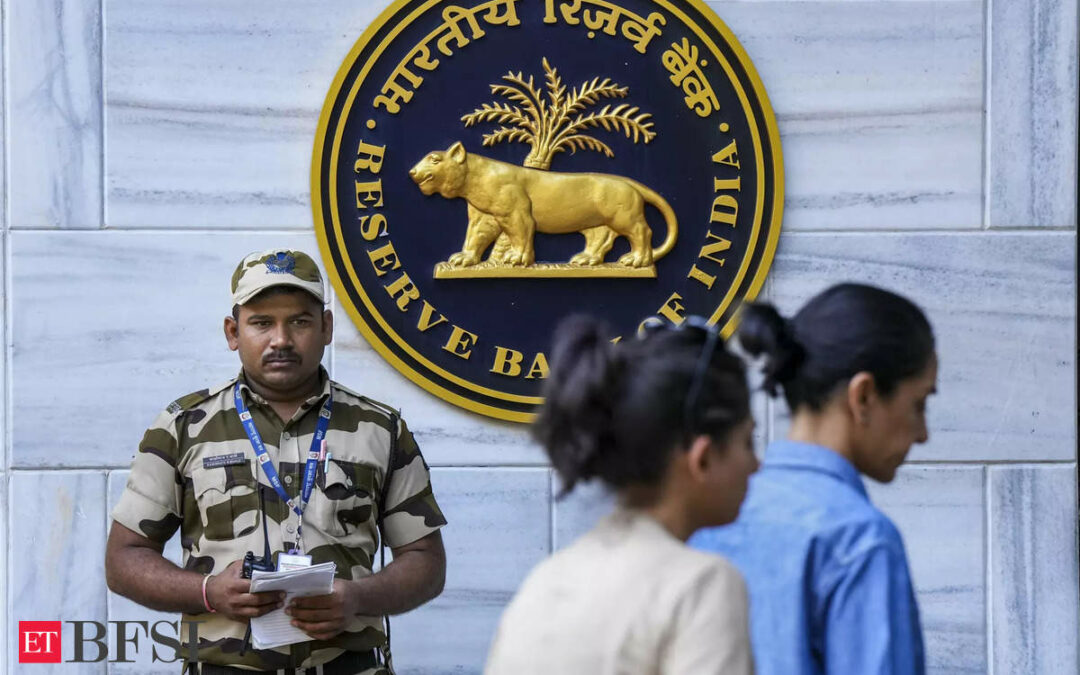MUMBAI: India’s central bank will likely keep its key interest rate unchanged Friday, maintaining its focus on inflation as oil prices surge and the Federal Reserve’s tightening puts pressure on the rupee.
All 38 economists in a Bloomberg survey expect the Reserve Bank of India’s six-member monetary policy committee to keep the repurchase rate unchanged at 6.5% for a fourth straight time.
Economists including from Citigroup Inc, Goldman Sachs Group Inc and others predict the RBI will maintain a hawkish policy stance of “withdrawal of accommodation.”
Inflation remains well above the 4% midpoint of the RBI’s target range despite some slowdown recently as food prices eased. Governor Shaktikanta Das is likely to maintain his hawkish rhetoric on inflation, avoiding any signal that rate cuts are on the cards just yet, given the Fed’s tightening stance and the impact that’s having on currencies like the rupee. The RBI hiked its key rate by 2.5 percentage points since last year.
“With inflation still above the target, the RBI MPC is on course to maintain a hawkish pause in October, besides keeping liquidity tight,” said Radhika Rao, economist with DBS Group Holdings Ltd. The central bank’s outlook on growth and uncertainty over the US rate path will likely “keep the policy committee from exploring rate cuts this fiscal year,” she said.
In the absence of a rate move, the RBI may shift its focus to liquidity management, with policy makers seeking to keep cash in the financial system relatively tight in order to control inflation pressures. Bond traders will be watching closely for any RBI signals around liquidity, including plans to sell bonds in the open market.
Here’s a closer look at what’s expected from the rate decision, which will be announced by Governor Das in a webcast that begins at 10am in Mumbai:
Inflation Pressure
While inflation moderated to 6.83% in August, it’s likely to remain elevated for now as oil prices hover around $90 a barrel, above the RBI’s estimate of $85.
Economists expect inflation to gradually ease toward the end of the year, although remain above the midpoint of the RBI’s target. Samiran Chakraborty, an economist with Citigroup Inc, forecasts inflation will slow to 5.3% in September, although “risks of inflationary pressure from cereals and pulses would be difficult to ignore,” he said.
The RBI will probably raise its full year inflation forecast of 5.4% slightly higher, he said. The economic growth forecast will likely remain unchanged at 6.5% for the fiscal year through March 2024, though the tone of the policy will remain hawkish, he said.
Liquidity Moves
At its last meeting in August, the RBI increased the amount of cash banks must keep in reserve as part of a temporary move to help mop up excess liquidity caused by the removal of 2,000 rupee notes from circulation. The RBI also sold government bonds in the secondary markets to remove any leftover cash.
Banking system liquidity was in a deficit of 183 billion rupees ($2.2 billion) as of October 3 compared with a surplus of 2 trillion rupees before the RBI raised the reserve ratio for banks, according to Bloomberg Economics.
As a result, overnight rates as well as treasury bill yields have risen, causing financial conditions to tighten.
Bond investors are looking for signals on how much liquidity the central bank will be comfortable leaving in the banking system after the cash reserve ratio hike is fully reversed on October 7.
Bond Flows
Investors are also looking for clues on the RBI’s strategy to handle the billions of dollars of foreign inflows expected after January once India’s bonds are included in JPMorgan & Co’s emerging market bond index.
“A prolonged pause with intermittent liquidity tightness is reflected in the current swap curve,” said Churchil Bhatt, an executive vice president for debt investments at Kotak Mahindra Life Insurance Ltd. “I don’t think INR swaps are yet pricing in a hike.”
What Bloomberg economics says…
We expect the Reserve Bank of India to hold rates and maintain a hawkish stance even with upside risks to inflation receding. This would strike the right balance — supporting growth while buffering against risks of additional Federal Reserve hikes and higher oil prices.
Abhishek Gupta, India economist










